The Egyptian walking onion may just be getting more steps than I do! These prolific members of the allium family are one of those wacky, wild, and wonderfully weird vegetables that are so fun to grow. Here’s how to grow Egyptian walking onions in your home garden and where to get the uncommon bulbs.
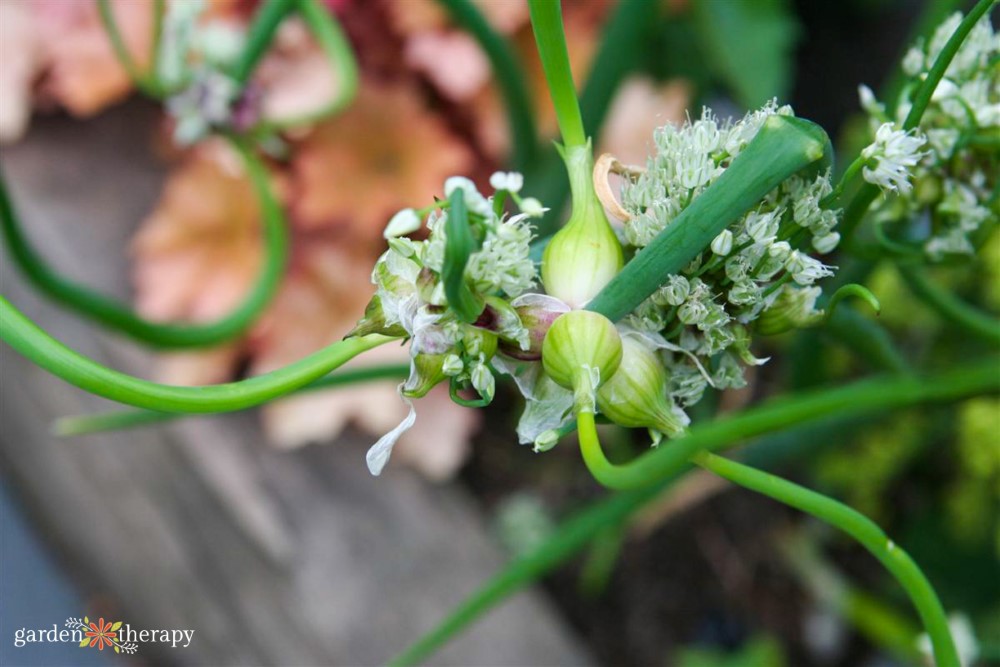
Perennial vegetables can be difficult to come by, but the onion family always gives year after year. I love Egyptian walking onions because they continue to plant themselves and are one of those weird vegetables only gardeners know about.
A food forest favourite, I got my first Egyptian walking onion from my time at a community garden. Now, whenever I see them, I get a warm and fuzzy feeling.
In my latest move, I’m building a garden from the ground up again, and I find myself nostalgic about certain plants. Egyptian walking onions hold a special place in my heart, and I want more gardeners to know about this bizarre but fun vegetable!
This post will cover…
- What Are Egyptian Walking Onion?
- When to Plant Egyptian Walking Onions
- How to Plant Egyptian Walking Onions
- Where to Buy Egyptian Walking Onions
- When to Harvest Egyptian Walking Onions
- Frequently Asked Questions About Egyptian Walking Onions
- More Ideas for Growing Food
What Are Egyptian Walking Onion?
The Egyptian walking onion, Allium x proliferum, is a member of the allium family and a great addition to the perennial vegetable garden. Egyptian onions go by many names, including tree onions, topset (or topsetting) onions, and walking onions.
They grow like most alliums, with a grass-like stem and a flower on top. However, this flower then turns into a cluster of tiny bulbs known as aerial bulbils.
As the clump of bulbils gets heavier, the plant droops and eventually topples over and plants itself. Over time, this cycle repeats, and the plant slowly “walks” around the garden.
Egyptian walking onions are a really fun and easy plant to grow. Wild and prolific, they’ll plant themselves so you can just enjoy and feast on them whenever you like.
These onions remind me just how cool plants can be. These onions flop over to spread, while others make themselves so tasty and delicious that birds will eat them, poop out the seeds, and spread them somewhere else. Other how little sticky burs to get places. Nature takes all kinds of opportunities to continue on for the next generation!
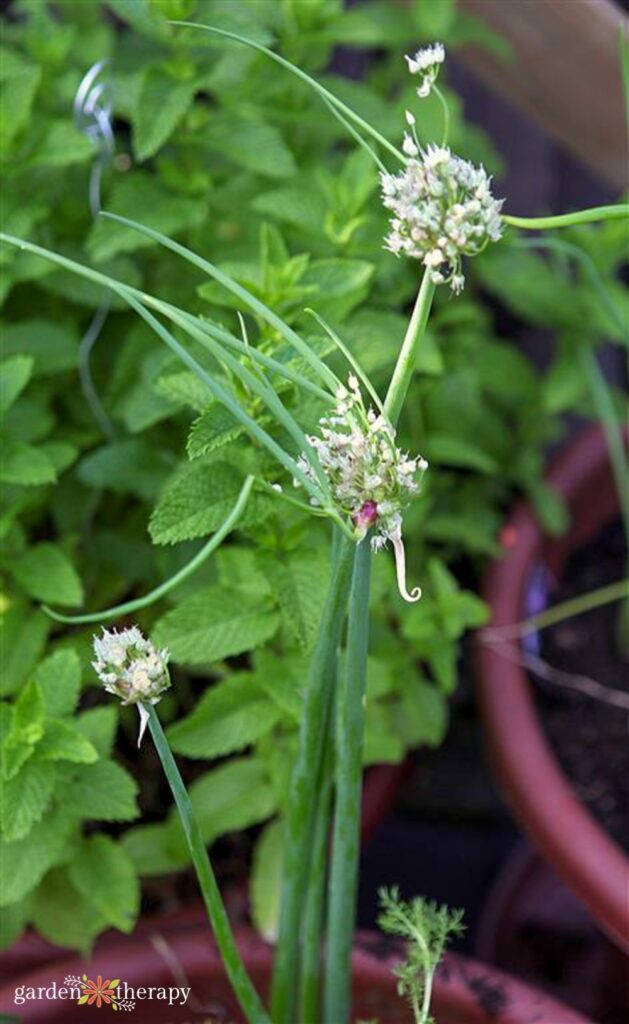
When to Plant Egyptian Walking Onions
Like other alliums, Egyptian walking onions are best planted in the fall. When it’s time to plant garlic, it’s also time to plant the onions. Wait until the first frost has passed, but the ground is still workable.
How to Plant Egyptian Walking Onions
Egyptian walking onions are very easy to plant. They even plant themselves, so it can’t be that difficult to get them to grow!
No prep is needed for the bulbs, like soaking. Just plant them up to 2 inches deep, with a minimum of ½ soil on top of them. You can either plant a whole clump of bulbils or separate them into individual bulbs to plant.
Place the onions in full to partial sun. Give them a good watering after planting.
If you want to, you can mix in compost to the soil to give the bulb a boost. Egyptian walking onions like well-draining soil so the bulb doesn’t rot.
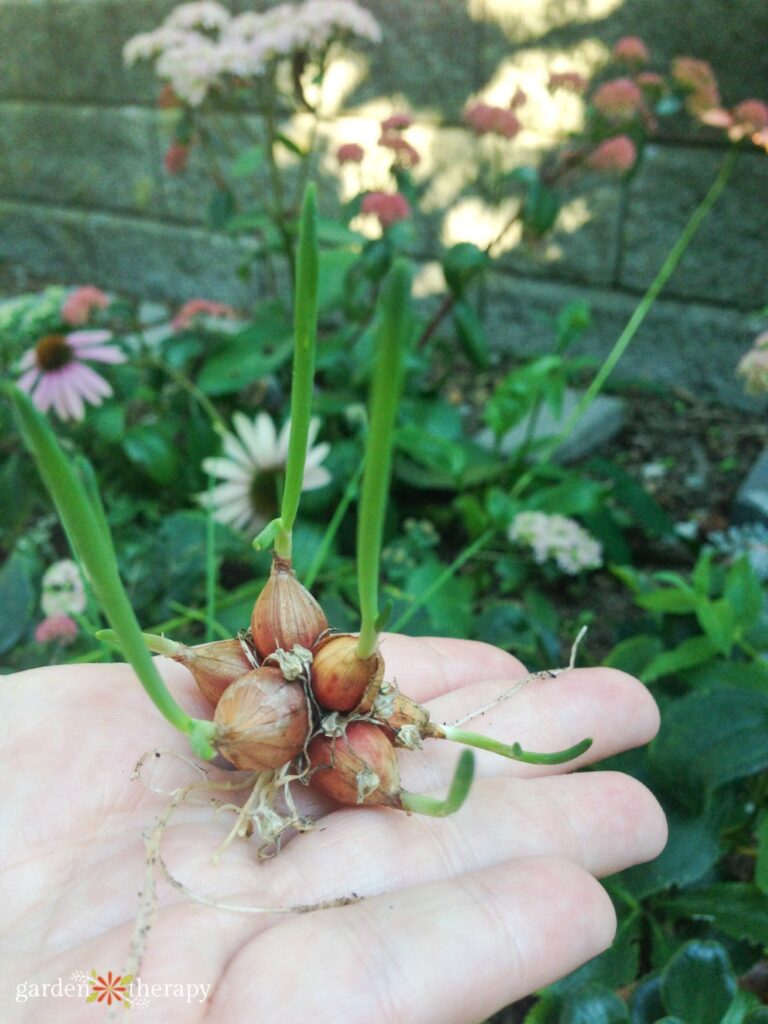
Where to Buy Egyptian Walking Onions
I like to call Egyptian walking onions a secret garden plant since you most often get them from fellow gardeners rather than from the garden centre or a farmer’s market. They’re very popular with home gardeners.
Since they’re so prolific, sharing the little bulbils with others to plant in their garden is easy. I got my very first Egyptian walking onion at the Strathcona Community Garden when I was a member.
The seeds are slow growing, and can take several years for them to grow and flower. That’s why people grow them mostly from established bulbs.
If you can’t find Egyptian walking onions from someone in the community, you can find Egyptian walking onions at a few places online:
When to Harvest Egyptian Walking Onions
In the spring, you can eat the stems like you would green onions or chives. New ones will come in the summer and have a strong onion flavour. The stems get thicker come summertime.
If you let the stems mature, they will grow the bulbil. They begin to appear once the flowers have faded. You’ll know the bulbils are ready for harvest when the stems have browned and dried,
It will take a whole year for a new plant to reach the bulbil stage. It’s best not to harvest the spring green shoots in the first year.
You can eat all parts of the plant, including the bulb in the ground, the stem, the flowers, and the bulbils. The bulbils are delicious and my favourite way to enjoy them.
If you eat the bulb below the ground, the plant won’t return for the following year. Unlike other onions, the bulb is also quite small, so I prefer to leave them in the ground.
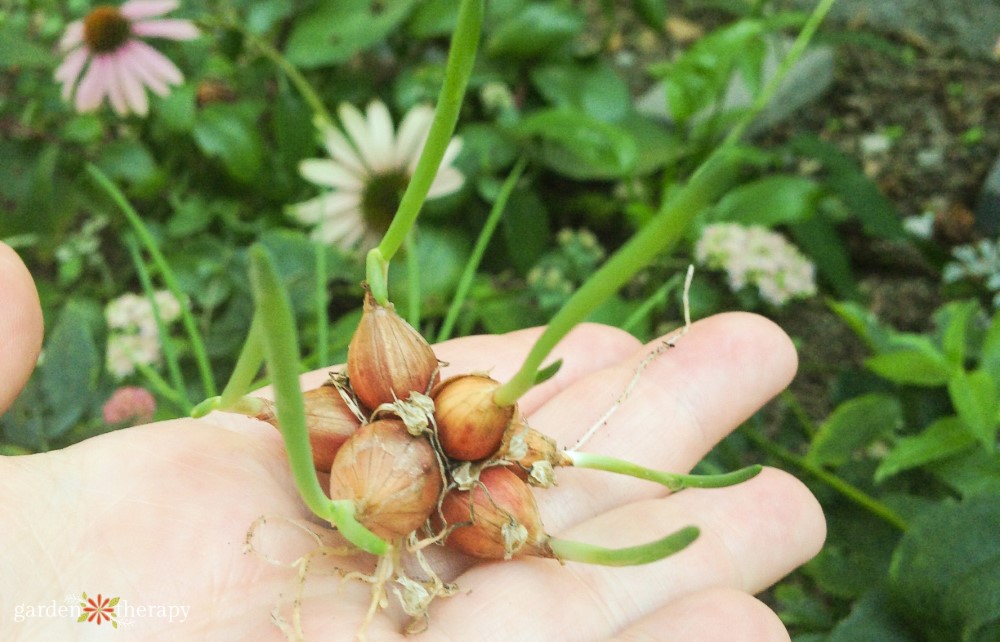
Frequently Asked Questions About Egyptian Walking Onions
Every part of the Egyptian walking onion is edible, including the bulb in the ground, the stems, the flower, and the aerial bulbils. I would avoid eating the bottom bulb though, as then the plant won’t return the following year.
Treat the greens like you would green onions. You can slice the bulbs and treat them like little onions. They can be eaten cooked, pickled, or dry for storage.
Tree onions are another name for Egyptian walking onions and are a perennial vegetable. They will return from the main bulb in the ground and will also multiply via the bulbils at the top flopping over and planting themselves in the ground.
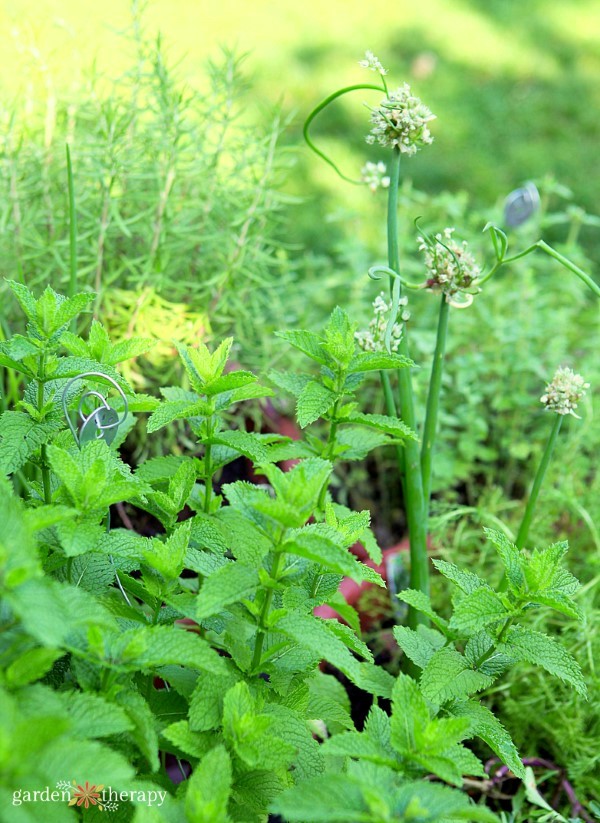
Have you grown Egyptian walking onions before? I’d love to hear what you think about these wacky onions in the comments below.




